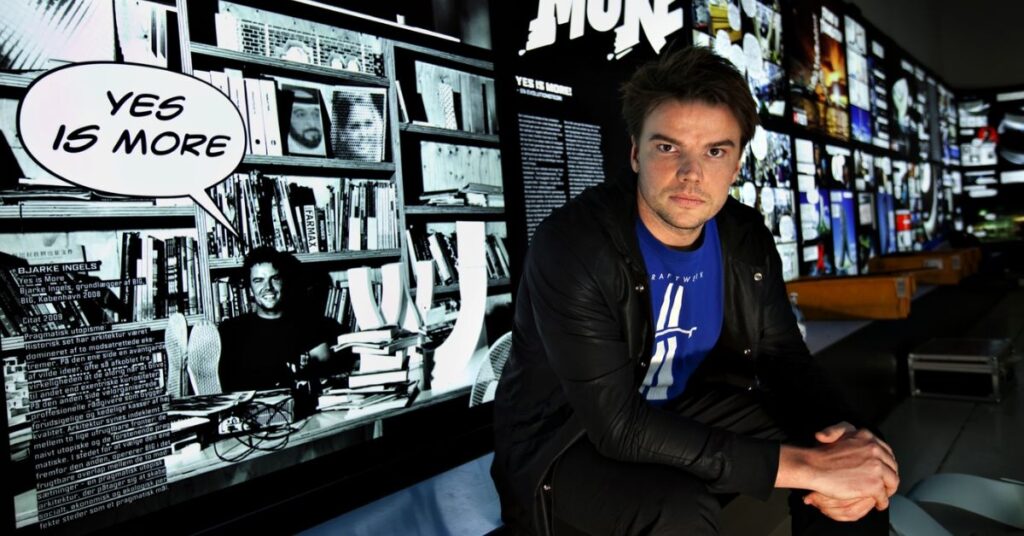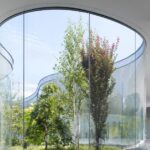Who Is Bjarke Ingels? Bjarke Ingels is not your conventional architect. Known for his charismatic energy and unorthodox design thinking, Ingels has rapidly risen to global prominence as the founder of the Danish architecture firm Bjarke Ingels Group (BIG). His design philosophy, captured in the manifesto titled "Yes Is More," flips traditional architectural dogma on its head—arguing that optimism, pragmatism, and playfulness can co-exist in serious, sustainable design. Born in Copenhagen in 1974, Ingels initially aspired to become a cartoonist. This early interest in visual storytelling is still evident in his bold presentations, diagrammatic sketches, and graphic-novel-inspired monograph. After studying architecture at the Royal Danish Academy of Fine Arts and the Escola Tècnica Superior d'Arquitectura in Barcelona, Ingels worked with Rem Koolhaas at OMA, before founding PLOT Architects and later BIG in 2005. Yes Is More: A Design Manifesto "Yes Is More" isn’t just a catchy phrase—it’s Ingels’ creative manifesto. Unlike the modernist “Less Is More” mantra, which emphasizes restraint and minimalism, Ingels’ approach is grounded in inclusivity and possibility. His “yes” is about saying yes to form and function, sustainability and spectacle, local context and global relevance. The Yes Is More book is visually structured like a comic book, packed with sketches, speech bubbles, and explanatory narratives. This accessible format reflects his belief that architecture should engage the public and spark dialogue—not just exist for the elite few. It also illustrates how architectural ideas evolve through iteration, constraints, collaboration, and often, the unexpected. Designing with Optimism and Performance At …
Bjarke Ingels: Yes Is More

Who Is Bjarke Ingels?
Bjarke Ingels is not your conventional architect. Known for his charismatic energy and unorthodox design thinking, Ingels has rapidly risen to global prominence as the founder of the Danish architecture firm Bjarke Ingels Group (BIG). His design philosophy, captured in the manifesto titled “Yes Is More,” flips traditional architectural dogma on its head—arguing that optimism, pragmatism, and playfulness can co-exist in serious, sustainable design.
Born in Copenhagen in 1974, Ingels initially aspired to become a cartoonist. This early interest in visual storytelling is still evident in his bold presentations, diagrammatic sketches, and graphic-novel-inspired monograph. After studying architecture at the Royal Danish Academy of Fine Arts and the Escola Tècnica Superior d’Arquitectura in Barcelona, Ingels worked with Rem Koolhaas at OMA, before founding PLOT Architects and later BIG in 2005.
Yes Is More: A Design Manifesto

“Yes Is More” isn’t just a catchy phrase—it’s Ingels’ creative manifesto. Unlike the modernist “Less Is More” mantra, which emphasizes restraint and minimalism, Ingels’ approach is grounded in inclusivity and possibility. His “yes” is about saying yes to form and function, sustainability and spectacle, local context and global relevance.
The Yes Is More book is visually structured like a comic book, packed with sketches, speech bubbles, and explanatory narratives. This accessible format reflects his belief that architecture should engage the public and spark dialogue—not just exist for the elite few. It also illustrates how architectural ideas evolve through iteration, constraints, collaboration, and often, the unexpected.
Designing with Optimism and Performance
At the heart of Ingels’ practice is what he calls “pragmatic utopianism”—the idea that architecture can create better living environments by merging radical ideas with practical solutions. His projects don’t shy away from complexity. In fact, they often embrace it to produce surprising results.
Take the 8 House in Copenhagen, a mixed-use building shaped like a figure eight. It combines commercial spaces, townhouses, and apartments with a continuous ramp that allows people to bike from the street all the way up to the penthouses. It’s a building where urban life is literally designed to move upward and around in a social loop—fusing accessibility, sustainability, and urban community.
Another perfect example is VM Houses and Mountain Dwellings in Ørestad, which challenge traditional apartment-block layouts by maximizing daylight, views, and green space through inventive geometry.
Global Projects, Local Stories
What sets BIG’s work apart is its ability to scale dramatically without losing site-specific sensitivity. Ingels’ firm operates globally, yet his buildings never feel like cut-and-paste templates. Every design is contextually embedded.
In Amager Bakke (Copenhill), a waste-to-energy plant in Copenhagen, Ingels layered a ski slope, climbing wall, and hiking trail onto the building’s roof. The result? A piece of green infrastructure that doubles as a public playground. It’s a literal embodiment of the Yes Is More spirit: why not have a power plant that’s also a sports facility?
In New York, BIG’s VIA 57 West reimagines the traditional skyscraper as a “courtscraper”—a fusion of courtyard housing and high-rise living. Its sloping form maximizes natural light while offering Manhattan skyline views and internal greenery.
Across the world in Shenzhen, BIG designed the Shenzhen Energy Mansion, a tower shaped by the sun’s path and the region’s energy efficiency goals. Here again, performance and form work hand in hand, proving that sustainable architecture can be aesthetically bold.
Innovation Meets Technology
Bjarke Ingels has also been at the forefront of architecture’s evolving relationship with technology. BIG’s designs are heavily reliant on digital modeling, parametric tools, and environmental simulations. However, what makes them successful isn’t just tech-savviness—it’s the ability to humanize high-tech solutions.
For instance, BIG’s Mars Science City concept, designed in collaboration with the Mohammed bin Rashid Space Centre in Dubai, explores how architecture might adapt to other planets. It’s not pure fantasy—it’s a research initiative to test how future cities might be self-sustaining under extreme conditions. From Earth to Mars, BIG’s work often operates at the edge of what’s currently possible, while nudging that edge further with bold ideas.
Criticism and Controversy
Of course, Ingels’ popularity and flamboyance have not come without criticism. Some argue that BIG’s architecture can feel like attention-seeking spectacle, favoring visual impact over deeper social impact. Others have questioned how closely BIG’s designs align with long-term sustainability metrics, especially when working with corporate or governmental clients in controversial contexts.
But Ingels embraces these tensions. His response? “Yes” doesn’t mean naivety or blind acceptance. It means saying yes to complexity, yes to contradiction, yes to rethinking the norms—an approach that acknowledges architecture’s real-world messiness rather than denying it.
Educator and Communicator
One of Bjarke Ingels’ most powerful contributions to architecture is his ability to communicate ideas to a wide audience. Whether speaking at TED, writing manifestos, or giving interviews, he consistently uses simple language, humor, and visual metaphors to explain complex design logic. This clarity has helped make architecture more democratic—something many architects struggle with.
He’s also served as a visiting professor at Harvard, Columbia, and Yale, inspiring the next generation of architects to think expansively about their role—not just as designers, but as public intellectuals, environmental stewards, and civic leaders.
Conclusion: The Architect of Possibility
Bjarke Ingels is not simply an architect of buildings—he’s an architect of possibility. In a world that often defaults to “no,” he insists on “yes”—yes to creativity, yes to livability, yes to mixing the fun with the functional. His work proves that architecture doesn’t have to choose between beauty and utility, or between fantasy and pragmatism.
“Yes Is More” is more than a motto. It’s a mindset that reimagines the limits of design, encourages experimentation, and challenges architects to rethink what their profession can accomplish in the 21st century.


